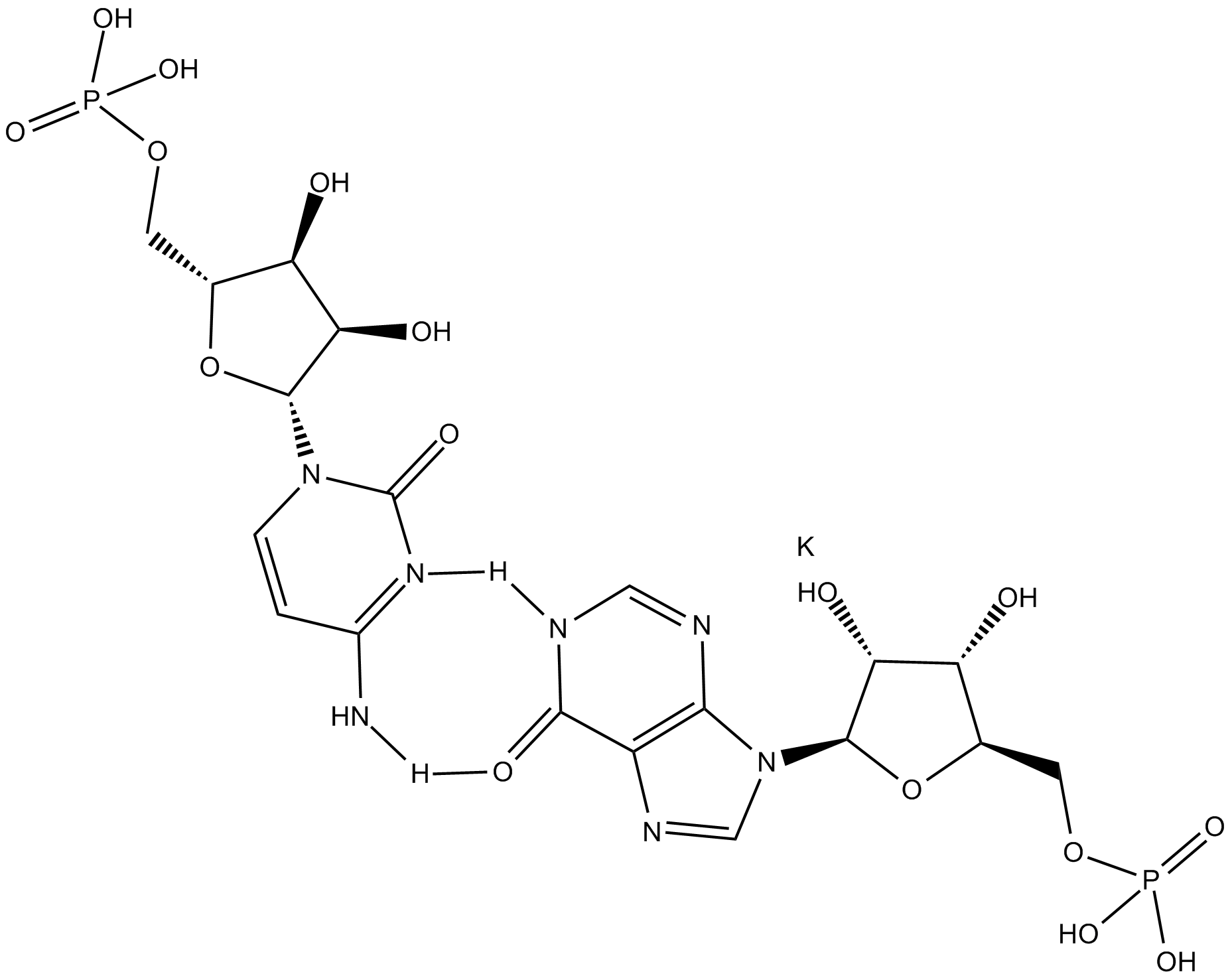Polyinosinic-polycytidylic Acid (potassium salt) (Synonyms: Poly(I:C)) |
| Catalog No.GC13800 |
synthetic dsRNA that activates TLR3 and retinoic acid inducible gene 1 (RIG-1)-like receptors
Products are for research use only. Not for human use. We do not sell to patients.

Cas No.: 31852-29-6
Sample solution is provided at 25 µL, 10mM.
Polyinosinic:polycytidylic acid (poly I:C) is a synthetic double-stranded RNA that activates toll-like receptor 3 and retinoic acid inducible gene 1 (RIG-1)-like receptors, including RIG-1 and melanoma differentiation associated gene 5 [1].
In vitro: In the TLR3-transfected cells, Poly I:C stimulated the production of IL-8 in a dose-dependent manner [2]. Poly I:C liposome could directly suppress the growth of B16F10 melanoma in vitro and repeated peritumoral injections of Poly I:C liposome inhibited melanoma growth in a dose-dependent manner[3].
In vivo: Two days after implantation of a reticulum cell sarcoma, a lymphatic lymphoma, two leukemias, a fibrosarcoma, and a human adenovirus 12-induced tumor, treatment with polyinosinic polycytidylic-acid resulted in decreased growth rates of the tumors and increased survival times of the animals. In the reticulum cell sarcoma and the adenovirus 12-induced tumor, treatment with polyinosinic polycytidylic-acid caused a regression of the tumor after the tumor was grown to moderate size [4]. 3 h after an intraperitoneal injection of poly I:C (750 μg/kg), maximal fever of 1.6°C above baseline was observed. IL-1β and cyclooxygenase-2 mRNA were significantly upregulated in the hypothalamus of poly I:C-treated animals. Poly I:C decreased food intake by 30% [5]. Poly I:C inhibited chemically induced tumorigenesis in mouse skin [6].
References:
[1] Cheng Y, Xu F. Anticancer function of polyinosinic-polycytidylic acid[J]. Cancer biology & therapy, 2010, 10(12): 1219-1223.
[2] Lseke S, Grage‐Griebenow E, Heine H, et al. In vitro‐Generated Viral Double‐Stranded RNA in Contrast to Polyinosinic: Polycytidylic Acid Induces Interferon‐α in Human Plasmacytoid Dendritic Cells[J]. Scandinavian journal of immunology, 2006, 63(4): 264-274.
[3] Fujimura T, Nakagawa S, Ohtani T, et al. Inhibitory effect of the polyinosinic‐polycytidylic acid/cationic liposome on the progression of murine B16F10 melanoma[J]. European journal of immunology, 2006, 36(12): 3371-3380.
[4]. Levy H B, Law L W, Rabson A S. Inhibition of tumor growth by polyinosinic-polycytidylic acid[J]. Proceedings of the National Academy of Sciences, 1969, 62(2): 357-361.
[5]. Fortier M E, Kent S, Ashdown H, et al. The viral mimic, polyinosinic: polycytidylic acid, induces fever in rats via an interleukin-1-dependent mechanism[J]. American Journal of Physiology-Regulatory, Integrative and Comparative Physiology, 2004, 287(4): R759-R766.
[6]. Gelboin H V, Levy H B. Polyinosinic-polycytidylic acid inhibits chemically induced tumorigenesis in mouse skin[J]. Science, 1970, 167(3915): 205-207.
Average Rating: 5 (Based on Reviews and 14 reference(s) in Google Scholar.)
GLPBIO products are for RESEARCH USE ONLY. Please make sure your review or question is research based.
Required fields are marked with *



















